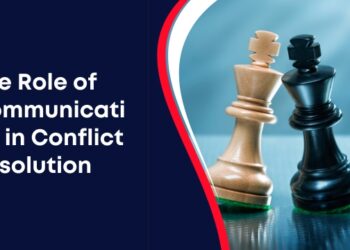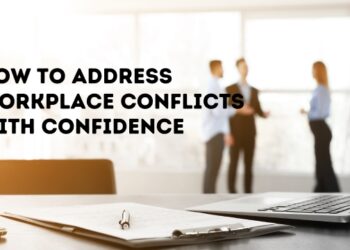Disputes in the workplace are inevitable. Knowing how to handle these conflicts is crucial for a leader. For women in leadership roles, the approach can sometimes feel more challenging. However, effective dispute resolution is a skill that can be mastered. This article offers practical tips to help women leaders navigate and resolve conflicts confidently and gracefully.
Understanding the Importance of Conflict Resolution
Before exploring strategies, it’s essential to understand why conflict resolution is important. If unresolved, disputes can lead to decreased morale, reduced productivity, and a toxic work environment. On the other hand, effectively addressing conflicts can foster collaboration, enhance communication, and strengthen team relationships.
Recognizing Your Leadership Style– Every leader has a unique style. Understanding yours is the first step in conflict resolution. Take time to reflect on how you typically handle disputes. Recognizing your tendencies helps you adapt your approach to resolving disputes.
Create a Safe Environment
A safe and open environment encourages team members to voice their concerns without fear of retribution. This is crucial for effective conflict resolution.
Foster Open Communication- Encourage team members to share their thoughts and feelings. Regular check-ins and team meetings can facilitate open dialogue. Make it clear that differing opinions are welcomed and valued.
Set Ground Rules– When conflicts arise, establish ground rules for discussions. These include being respectful, listening actively, and focusing on the issue, not personal attacks. Ground rules create a constructive atmosphere for resolving disputes.
Active Listening Skills
Listening is one of the most powerful tools in conflict resolution. It shows respect and helps you understand different perspectives.
Listen Without Interrupting- Allow each party to express their views during a conflict. Resist the urge to interrupt or formulate your response while they speak. Instead, focus on understanding their points of view. This practice builds trust and demonstrates that you value their opinions.
Reflect and Clarify- After listening, summarize what you’ve heard. This ensures you accurately understand their concerns. Phrases like “What I hear you saying is…” can help clarify misunderstandings. Reflecting shows that you are engaged and empathetic.
Encourage Collaborative Solutions
When conflicts arise, the goal is to find a resolution that works for everyone involved. Collaboration plays an important role in this process.
Brainstorm Together- Invite all parties to brainstorm potential solutions. Encourage creativity and openness to new ideas. A collaborative approach empowers individuals and promotes ownership of the resolution.
Evaluate Options- Once solutions have been proposed, evaluate each option together. Discuss the pros and cons, and be open to compromise. This collaborative evaluation fosters a sense of teamwork and commitment to the chosen solution.
Follow Up After Resolution
Conflict resolution doesn’t end when a solution is reached. Following up is essential to ensure that the resolution is effective and lasting.
Check-in Regularly– Schedule follow-up meetings to discuss how the solution is working. This demonstrates your commitment to resolving the conflict and reinforces the importance of open communication.
Be Open to Feedback- Encourage feedback about the resolution process. What could have been done differently? This feedback can inform future conflict resolution efforts and enhance your leadership skills.
Conclusion
By embracing these strategies, you can transform disputes into opportunities for growth and strengthen your leadership. Resolving conflict is a step toward a more harmonious and productive work environment. With practice and dedication, you can become a master in conflict resolution and inspire those around you.





